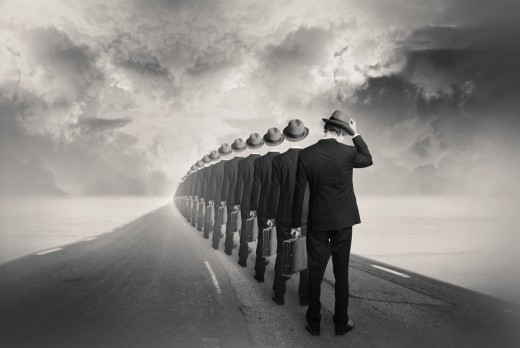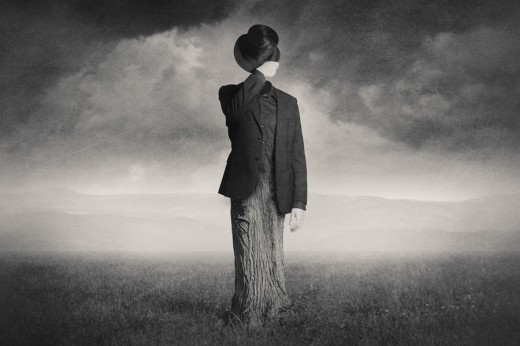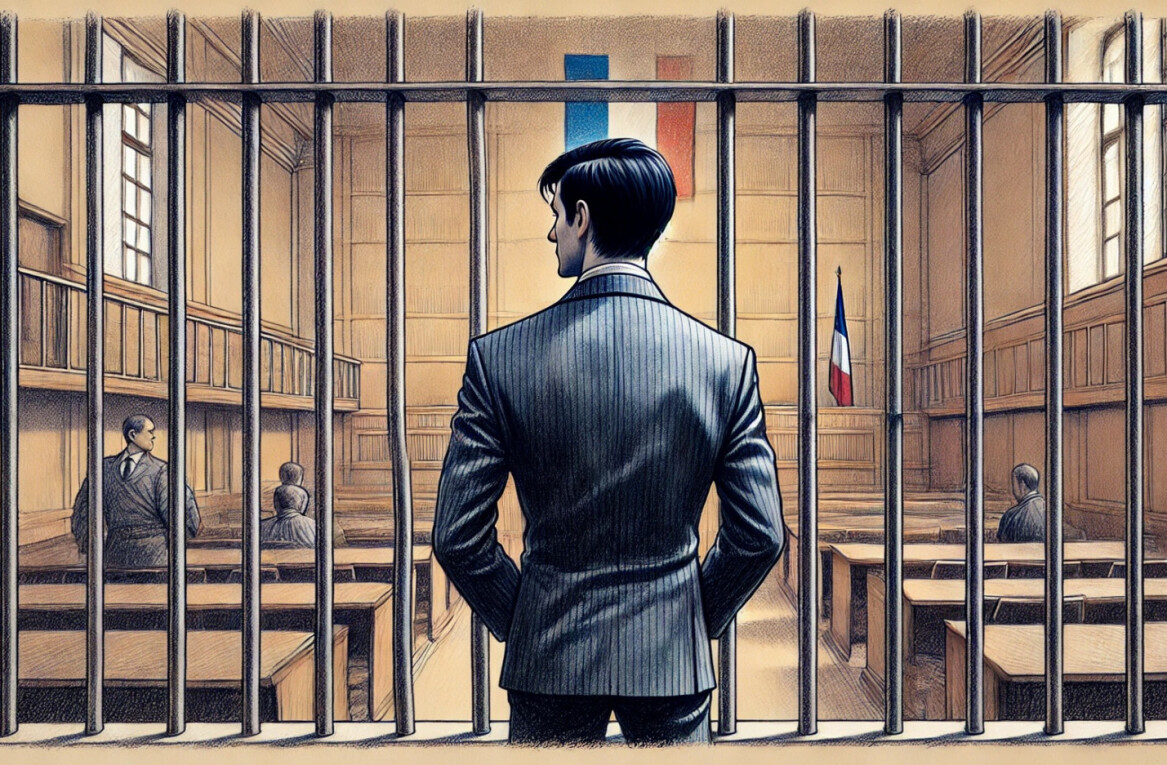
Welcome to our second post in the Chasing Photons series, where every Tuesday we will feature one photographer who shares their photography online, using the likes of Google+, Flickr, 500px, or even their own website.
Today we are featuring, Tommy Ingberg, a 30 year old Swede raised in Upplands Väsby just north of Stockholm, Sweden. He is an IT-consultant focusing mainly on programming.
For Tommy, photography is a serious hobby, which he dedicates most evenings and weekends to, working on his art.
His most recent work is a heady combination of photography and surrealism, where each image leaves the viewer open to a hundred and one different interpretations.
You can check out Tommy’s full body of work on his website and his Google+ profile.
Nancy Messieh: What’s in your camera bag?
Tommy Ingberg (TI): I have a Canon EOS 7D, a Canon 24-70/2.8L and a canon EF-S 10-22. I also have a set of Elinchrome Porta Lite BX-Ri500 that I use when shooting in studio. I feel that the 7D gives me really good quality and resolution at a reasonable price, although it would be nice with a bit more pixels to play around with. The 24-70 lens gives me awesome sharpness and the flash heads gives me really good consistent light.
NM: Did you study photography or are you self-taught?
TI: I am self taught. I’ve tried several areas of photography, portraits, concert photography, street photography, nature photography and everything in between. I’ve learnt, and am still learning through trial and error, combined with all the knowledge on the Internet.
NM: When/how did you decide to become a photographer?
TI: As long I can remember I’ve been preoccupied with photography. When I was 15 years old I got my first system camera, a Praktica with two lenses and it was then I decided that I wanted to do photography. I needed a way to express myself, and instead of playing in a band, painting or writing I chose photography.
NM: What does photography mean to you?
TI: I have a need to express myself and photography is my way of doing that; an outlet for my creativity, and maybe in some way a sort of therapy.
NM: If you have to choose one photo taken by someone else that you wish you had taken – what would it be?
TI: Well, it would have to be this photo, taken by the crew of Apollo 11 prior to landing on the moon. I can’t even begin to understand the feeling of seeing the earth from that distance, of being that far away from home. It has to be utterly mind blowing and a life altering event that very few people has ever experienced.
TI: Define your photography in one sentence.
I make surrealistic photo montages and strive for simple, scaled back compositions with few elements, where every part adds to the story, but where there are still gaps for the viewer to fill.
NM: What is the one photo you are most proud of?
TI: It has to be my picture titled “Hollow“. I have been photographing since I was a child, but I’ve worked with photomontages for only about a year and a half. This image is really important to my development since it is the first one in the particular style I do today. This is the picture that made me go “Hey, THIS is what I want to do. This is what I want my pictures to look like” . So it holds a special place in my heart. It’s a great feeling, that first time when you produce something that you are really proud of.
NM: Where do you prefer to post your photos online? Why?
TI: I like the Swedish photo community fotosidan.se, where I have been a member since 2005. It is a great place to give and receive critique and it has played a big part in my development as a photographer. As for international sites I really like 1x.com, it’s a great site with many skilled photographers and the critique section there is awesome. Recently I’ve joined Google+, and so far it has been a positive experience. It is a great site for connecting with creative people from all over the world.
NM: Where do you love to go to shoot – whether it’s a city, country, or even a specific place.
TI: Well, I find that travelling and seeing new places really helps me think creatively. It is hard for me to go out and take creative pictures in Stockholm because I know it so well and I’ve seen it all, it is just the same old boring stuff as always. If I had to name a specific place it would have to be New York. I’ve been there two times and it is a fantastic city. I could not put my camera away for even a minute.
NM: Who or what inspires your photography? Who are your influences?
TI: I find inspiration in music, books, movies and art in any form. As for my influences, I’ve been into photography since I was a child and from age 15 and onwards I’ve been doing it as a serious hobby. I’ve tried all types of photography; street, portrait, concerts, product, stock and so on. Since I’ve tried so many types of photography my influences have been many and diverse, and from classic photography and arts rather than from digital art. Early on it was the great masters of photography like Cartier-Bresson, Leiboviz, Erwitt, Brassai and so on, to0 many to name. I consumed a lot of photography and had new favourites every day. When I started doing photomontages I started to learn about the great painters and artists from other fields, like Magritte, Dali, Escher and so on.
NM: Do you have any pre/post-photography rituals
TI: Nothing special, just making sure that all my equipment is working, that the lenses are clean, batteries are loaded and memory cards are empty and ready to be used. I try to get all the technical stuff out of the way so I don’t have to worry about them when shooting.
NM: What do you listen to when you’re editing?
TI: I usually listen to Spotify (a fantastic service), but the music varies a lot. I listen to everything and do not have a favourite genre. I try to listen to music that expresses the mood I’m going for in the image I’m editing.
NM: What do you do to jump start your photography if you’re blocked? (If that happens)
TI: For me creativity does not come easy. I can’t just sit around and wait for an idea. It is hard work, trial and error. I just keep taking pictures and making montages. Sometimes I can work for weeks and only produce pictures that go right into the garbage bin, but I know that if I keep working I will eventually get that one good idea/picture.
NM: Your work relies heavily on photo-manipulation. How would you respond to more purist circles who might say that photo-manipulation is not the same as photography?
TI: Well photo-manipulation is not the same as photography. That said, I think it is very strange to judge the quality of art by the way it was made or what you choose to call it. For me the final picture is what counts, not the process to get there. I call what I do “Photography”, because photography is the main part of my work. I spend a lot of time shooting in the studio and outside. Without good source files to work with it’s going to show in the final montage. You can do all kinds of magic in Photoshop, but not “save” bad source images. At least half the work is done when shooting the source images getting the direction and strength of the light the same in all the images, getting the angles right, getting the focus right, choosing backgrounds to be able to do the cut-outs cleanly and so on.
NM: Any advice for aspiring photographers?
TI: Well, I would still call myself aspiring, but the main thing I’ve learnt so far is work hard and do not give up. When looking back at my old pictures I can see how my current style of imagery slowly, but surely matured into what it is today. For me this is an ongoing process that so far has taken many, many years. Also, sharing your work on communities, giving and receiving critique is a great way to learn and develop.
Check out some more of Tommy’s photography below:
Keep up with the entire Chasing Photons series here.
Get the TNW newsletter
Get the most important tech news in your inbox each week.







